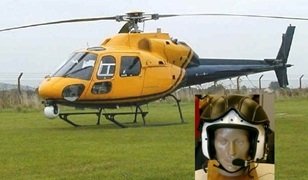Noise Assessments - it's time to change how things are done
A noise assessment is a risk reduction investment that should pay for itself, not simply a placebo check-box exercise. The HSE considers that most assessments are “inadequate”.
- The current risk management process is not fit for purpose. The UK is experiencing a tsunami of hearing damage claims for a 100% preventable condition. It's time to change how things are done - particularly as recent changes in both the medical and legal landscapes mean that claim (and therefore insurance) costs are set to soar >>
- Most personnel, including consultants, do not understand just how ineffective hearing protection is in the real world. They should. If you need more than 10dB attenuation, then you are in trouble...

- Noise control is usually ignored unless levels can be reduced below 85dB(A). It shouldn't be. Cutting noise from 100dB(A) to 94dB(A) reduces risk by 75% and PPE is much more likely to be effective
Guide to noise risk assessment report content: what you should expect >>
How to cut risk by 75% - 90% at negligible cost
A substantial number of employees suffer unnecessary hearing damage every year because the current default risk management procedures are not sufficiently effective. They are obviously (Noise Induced Hearing Loss (NIHL) claims) not best practice. Just 3 updates to the standard approach can reduce NIHL risk by 75% - 90% quickly and, in most cases, the revised procedures to reduce risk cost less than current expenditure. These are:-
- Assessment: don't waste resources on repeat placebo noise assessments telling you what you already know – that there's a problem. The HSE wants you to invest the resources in risk reduction instead.
- PPE performance: potentially double or treble real-world performance by knowing the limitations and by using the latest PPE technology - and ignore the manufacturers’ assumed protection data.
- Noise control: this can reduce risk by 50% - 90% at negligible cost (or even saving money) by sourcing the best engineering noise control measures available anywhere.
Keep current with occupational noise
Subscribe for the latest in techniques and best practice
Your problem may already be solved
Search our worldwide best practice options
75% - 90% reduced NIHL risk and reduced costs? Sounds like a plan...
Learn how via our acclaimed workshops, from revised noise risk management best practices - up to a full certificate of competency in noise at work qualification.
Noise Control Audit (NCA) - a cost benefit analysis
Whilst we provide benchmark risk assessments (see below), we can also provide a Noise Control Audit either as a stand-alone service (instead of simply repeating yet another placebo noise survey) that provides the missing element in noise reports or as part of a full noise risk assessment.
This engineering evaluation of the noise control options for a single machine or across a whole site provides you with an accurate cost / benefit analysis on which to base your risk reduction programme. It provides accurate evaluations of the noise attenuation achievable for each machine or area based on current best practice with costs to aid planning and budgeting. In a surprising number of cases, noise control programmes based on the latest best practice are self-financing (reduced PPE requirements, management hassles, better communication and working conditions, improved productivity etc).
Instead of paying for unnecessary repeat risk assessments under the regulations, implement a noise control programme that actually reduces the risks – and potentially pays for itself …
What should you expect from a good noise risk assessment?
Meeting the intent of the Control of Noise at Work Regulations (CoNaWR )requires a major revision in the current practices that have not worked. The only reason to carry out a noise assessment is to create an effective Action Plan for the next 2 years.
Control of Noise at Work Regulations – noise assessment expectations
Re-assessment every 2 years is not necessary. Just review and update. The noise assessment must provide you with a detailed programme of action. Investing in a high-quality assessment template for future updates is good practice. An evaluation of the noise control options is mandatory - controlling noise is a priority and PPE cannot be used as a long term solution unless it can be proved that noise control is not practical. There are low-cost noise control solutions to common problems here >
Quoting the HSE:- “… these regulations are concerned with controlling noise, not measuring it… the most important thing about the risk assessment is that it identifies, in an action plan, what needs to be done to protect employees. Employers are expected to use this to set about managing risks… if solutions have been identified “stop assessing and start controlling...”
The following is an outline of the key elements and features that you should expect to be included under each of the 4 headings in any practical and effective noise assessment report, whether in-house or via a consultant.
Noise Measurement
Risk Assessment
Noise Control Options
Action Plan
... or become qualified to carry out your own best practice noise risk assessments via our acclaimed, non-academic noise competency training courses.
Noise Assessment Reports - the HSE guide to content expectations
The HSE set up a small committee (including INVC) to produce a guide to noise risk assessment report content. The result is the checklist shown here.
The objectives are:
- encourage greater clarity between the assessor and the Dutyholder as to what level of reporting has been agreed
- the expected content
- encourage higher quality reporting (most noise risk assessment reports are inadequate)
Our benchmark reports tend to be "Comprehensive Report+", the "+" being both the quality and the capability to not only add a Noise Control Audit cost/benefit analysis of the options, but also to provide detailed recommendations that can be implemented by any local engineer.

Digital Noise Assessment (DNA) - high quality noise report templates
Noise reports are generally poor quality (60% are inadequate, 2025 HSE data - reinforced by our experiences reviewing very depressing noise assessments from IOSH courses) in various formats that make data retrieval a nightmare, encouraging "corporate amnesia".
Our new and updated benchmark Digital Noise Assessment (DNA) report template is available either in general form (cut-and-paste) or as a bespoke template that we develop specifically for an organisation. These high-quality reports, decades in development with feedback from IOSH competency courses, eliminate the time consuming and tedious process of report writing – which can take longer than the survey…
We hope that making our templates available will help make report writing less painful, spread best practice, improve reporting (and hence risk management) quality and save resources that would be better spent on risk reduction.
Acquire and use a high quality report format for all future noise assessments, in-house or via consultants
“… exactly the way assessments should be presented… loved the way the technical details are separated from the practical recommendations… the action plan section is ideal… particularly impressed by the low costs associated with the noise control options to actually solve some of the problems…”

The Digital Noise Assessment (DNA) provides benchmark report templates covering all the requirements of the noise regulations – including the plan of action. Used either in-house or by consultants as standard format for all updates, it makes noise data easily accessible so that you can find and use the information fast. It features:-
- DNA report “best practice” template: either as cut-and-paste from the customisable template Word document or as a bespoke organisation-specific report format
- Action Plan summary: editable managers’ action plan summary to track implementation of risk management
- Technical Notes: up-to-date technical notes on regulations, PPE, dose calculations, health surveillance, Buy Quiet, noise control, training
- Example Report: completed pdf report example including factory plan noise levels
- Noise Control Audit: if you don’t have the technical background for this mandatory regulatory requirement to make a cost / benefit analysis of the noise control options, we can provide this as an add-on service. Contact us to discuss.
The template report documentation is also available to delegates on our certificate of competence in workplace noise risk assessment and management public courses.
Bespoke Noise Risk Assessments - complex projects

Assessing the potential risks to hearing for some types of exposure can require complex projects involving combinations of expertise and experience across a number of noise measurement and evaluation techniques and technologies that are well outside the experience of most organisations. Examples of past projects include:
Explosives
- Distraction grenades: peak noise can be in excess of 160dB(C). Requires very specialised instrumentation, not to mention great care in ensuring personnel safety...
- Large guns: measurements on military firing ranges

Firearms
- Police and military: ranges, exercises and test facilities
Communication and Call Centres
We use a combination of assessment techniques, including artificial heads to assess risk, audibility, headset limiters etc.
- Communication centres: police and national security services
- Call centres: evaluation of risk, acoustic shock and recommendations for improvements
Activities requiring helmets/protective headwear
- Helicopter pilots
- Police motorcyclists
- Water jetting
In some cases, projects may include more than one of these unusual circumstances and it is therefore necessary to develop the optimum practical and safe noise risk assessment strategy for the particular circumstances.
Contact us if you have a complex assessment project that you would like to discuss.
Keep current with occupational noise
Subscribe for the latest in techniques and best practice
Your problem may already be solved
Search our worldwide best practice options
